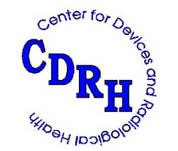Final Independent Assessment of FDA’s Premarket Review Process Released
有任何问题?向我们的专家获取相关信息
联系我们2016年 2月 9日
The final results of an independent evaluation of the US Food and Drug Administration’s medical device review program have been published, giving the agency high marks for efforts to improve review processes.
 Mandated by the Medical Device User Fee Amendments of 2012 (MDUFA III), the evaluation of the FDA included two phases of assessment carried out by the Booz Allen Hamilton consultancy. The first phase involved establishing 11 best practices and process improvements the FDA’s Center for Devices and Radiological Health (CDRH) could implement for more consistent and efficient premarket reviews.
Mandated by the Medical Device User Fee Amendments of 2012 (MDUFA III), the evaluation of the FDA included two phases of assessment carried out by the Booz Allen Hamilton consultancy. The first phase involved establishing 11 best practices and process improvements the FDA’s Center for Devices and Radiological Health (CDRH) could implement for more consistent and efficient premarket reviews.
In the second phase of the assessment, Booz Allen Hamilton evaluated CRDH’s efforts to implement recommended process improvements, and determined that the FDA unit is on track to adequately meet those recommendations. The recommendations covered several CDRH areas, but prioritized certain projects:
- Corrective and Preventative Action (CAPA) and Continuous Process Improvement recommendations resulted in new management review standard operating procedures and a quality feedback tool now in use by the CDRH.
- Document Control Systems Enhancement recommendations yielded new document management and IT system enhancement request standard operating procedures.
- Review Process Quality Metrics recommendations entailed identifying critical review process steps in CDRH’s 510(k) premarket notification program, then developing and using priority metrics to track and monitor quality.
- Decision-making Consistency recommendations led CDRH to deploy a guided review tool to boost consistency of premarket reviews.
- IT Systems Training recommendations led to CDRH requiring all premarket review staff to undergo IT systems training, and to establish a stable of in-house IT resources for support and guidance; as of mid-December 2015, 93% of required CDRH had completed the new IT training.
- Training Program Evaluation and Metrics efforts first comprised researching and documenting training best practices by CDRH, and then developing new training evaluation standard operating procedures.
“The initial results for a subset of the projects provide a positive indication that CDRH has promoted and begun using the products of their implementation projects,” states the report, but Booz Allen Hamilton acknowledges that more time will be needed to fully assess how successfully CDRH implements and maintains some of these projects—and how those projects impact US premarket review processes.
作者
- Stewart Eisenhart